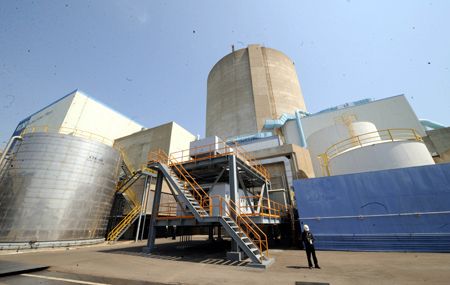
Nuclear safety concerns growing

Experts stress system overhaul necessary to avoid disaster
With nuclear reactors shutting down repeatedly month after month, there is growing concern over whether the nation’s atomic power plant management system has a structural problem that could lead to disaster.
Recently published data about a spate of nuclear incidents over the past decade suggests that the current situation should be taken more seriously. Most recently, nuclear reactors at two separate power plants in Busan and Younggwang stopped operations due to technical problems.
According to data provided by Korea Hydro and Nuclear Power (KHNP), nearly a quarter of the 93 unexpected breakdowns of nuclear reactors over the past decade were caused by malfunctions in parts that could have resulted in a disaster.
Thirteen breakdowns or 14 percent of the reported cases since 2002 were a result of malfunctions within the rods controlling the fission of nuclear material. Malfunctions in the cooling system accounted for 6.5 percent or six cases. Experts say both the fission controller and cooling systems are the most important parts for safety components required to keep reactors operational.
Two other breakdowns or 2.3 percent were caused by malfunctions in the emergency power supply system that was cited as the major cause of Japan’s nuclear disaster in March last year that included the meltdown of nuclear reactors and massive leaks of radiation.
These are figures contained in a report by the KHNP submitted to Rep. Kim Tae-won of the ruling Saenuri Party as part of the upcoming parliamentary audit of government and state-funded institutions.
The report has heightened the existing public unease over the safety of nuclear power plants, ignited by the disaster in Japan.
Six breakdowns have occurred since July this year, three of which were due to malfunctions within fission controllers.
“The possibility of a nuclear accident is high,” Kim said. “The KHNP should reinforce its safety measures to reduce the nuclear risks of the country.”
However, the KHNP insists that none of its previous operational problems has in any way caused radiation leaks or endangered public safety; an apparent reassurance that it has absolute control over the operational safety of all its nuclear reactors.
“The fission controller, cooler and power supply system are among the core parts of a nuclear reactor. Therefore a major hiccup in any of them may pose a grave threat to people’s health, however the likelihood under the existing safety system is extremely low that such that there is no realistic chance of that ever happening,” said an official at the Nuclear Safety and Security Commission. “All the reported cases were minor and they posed no actual risk to the safety of nuclear reactors.”
Nuclear experts refute the claim, saying a minor fault with the core parts could lead to a major incident. They referred to the repeated malfunctions in fission controllers, with this case reported on Oct. 2 in the Shingori 1 Reactor in Busan.
“A nuclear reactor with a troubled fission controller is analogous to a speeding car with a broken brake,” said Prof. Chang Jung-wook of Japan’s Matsuyama University. “The controller is an indispensable part of the process of stabilizing nuclear fission material.”
It is designed to fall into a water-filled nuclear reactor and decelerates nuclear fission by absorbing neutrons from fuel rods. A reactor risks overheating if the reactor does not function properly, with the worst case scenario being an explosion.
Chang attributed the 1986 Chernobyl nuclear disaster to malfunctions within the fission controller of the reactor, as an example of the possible risks.
KHNP officials however refute the possibility of the explosion of an overheated reactor, arguing that with the current technology used in Korean nuclear reactors such a scenario is simply impossible.
“Each reactor is protected by multiple safety measures thereby cutting the possibility of an explosion to near-zero even in a worst case scenario,” a KHNP official said. “Under the current safety system, fission controllers hanging over the reactors have been designed to automatically cause a halt to operation if the system detects any unusual signs inside or out of the facility. Not even a power failure can disrupt this automic process.”
Some experts believe the government’s downsizing of state-run organizations, including the KHNP, has undermined general operational effectiveness. The KHNP currently has 9,000 or so personnel across the country’s 23 nuclear reactors.
The company has sacked nearly 1,100 officials over the past four years in line with businessman-turned-President Lee Myung-bak’s strong drive towards trimming down what he described as “overweight” state-run companies and organizations.
Industry insiders said nearly 20 percent of engineers specializing in power supply and safety systems were laid off as part of the downsizing policy. As a consequence, three nuclear plants, Shingori, Shinwolsung and Shinuljin are suffering manpower shortages.
“Prior to the downsizing, the Younggwang nuclear plant had 25 engineers specializing in power supply, but now it only has 13,” according to an industry insider.
An unidentified KHNP official was quoted as saying in local media that the unplanned breakdown of nuclear reactors will “persist as long as the chronic manpower shortage remains unsolved.” <The Korea Times/Park Si-soo>


